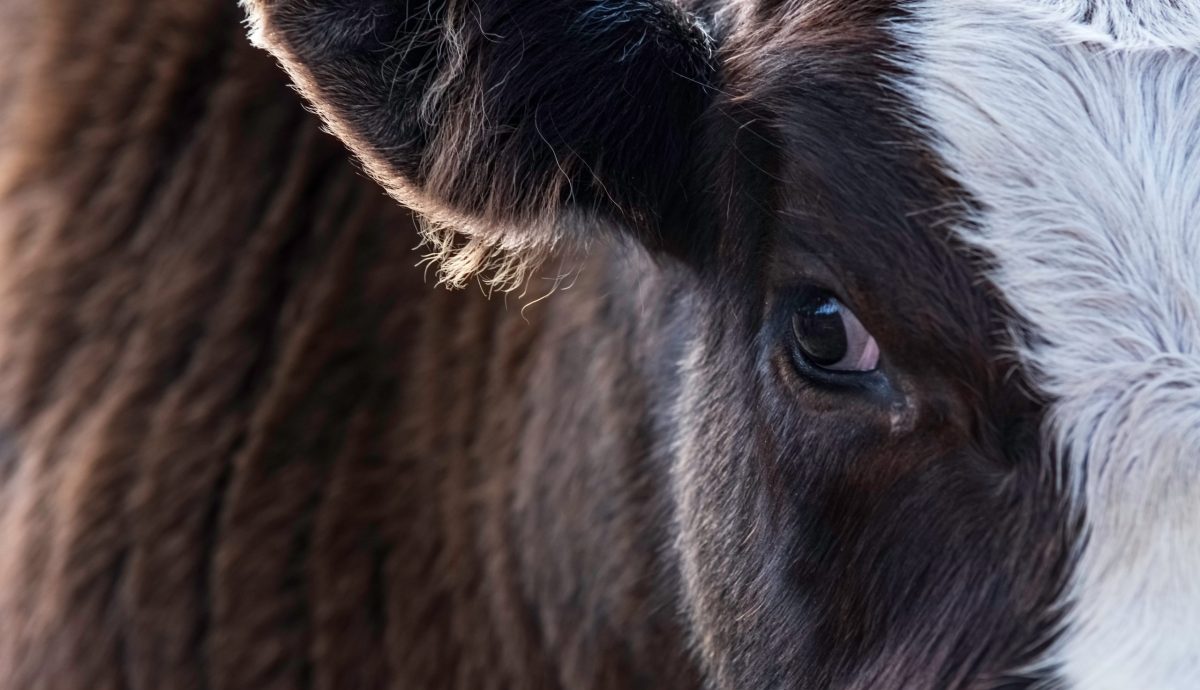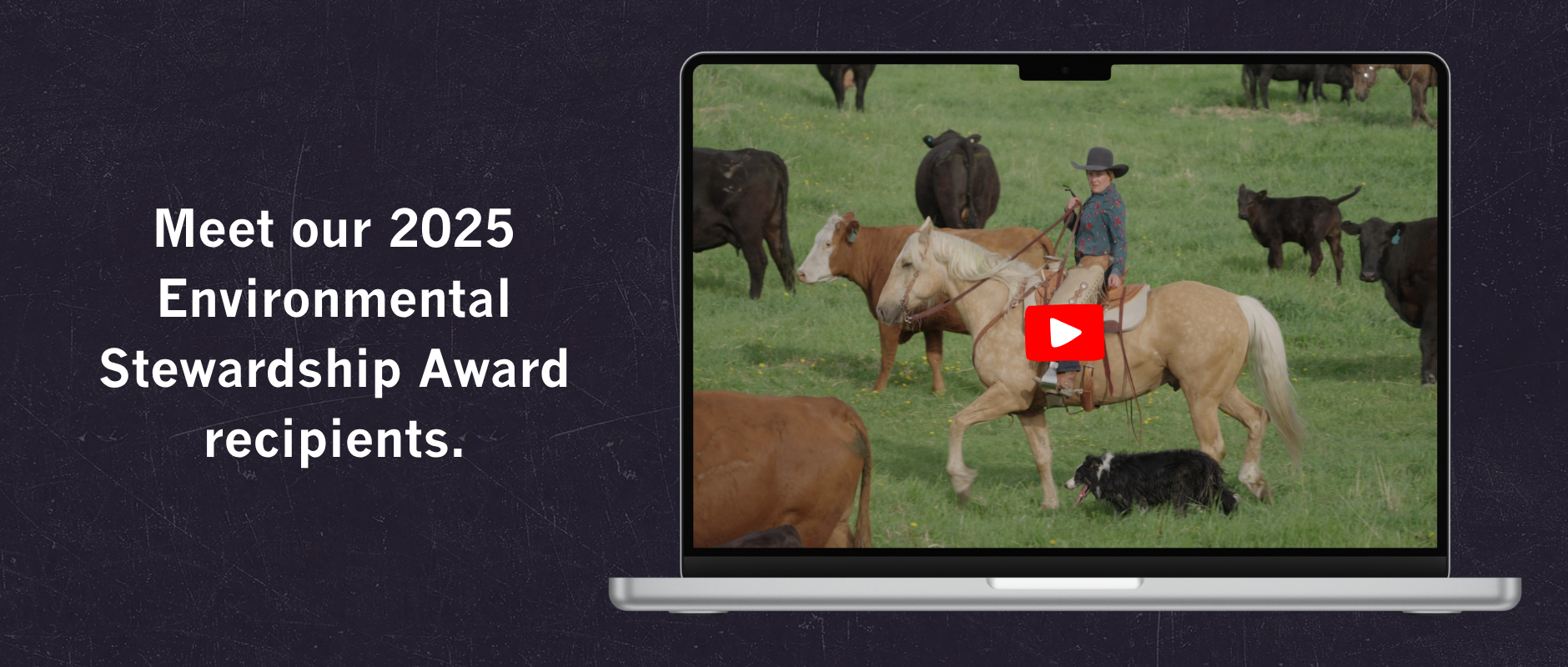AB Direct - Steers
Rail: 493.00-495.00 del
AB Direct - Heifers
Rail: 493.00-495.00 del
US Trade- Steers
Rail: 355.00 (NE)
US Trade - Heifers
Rail: 355.00 (NE)
Canadian Dollar
0.22

Feedlot innovations in Alberta
Feedlot production is an essential part of our industry. It provides an avenue for cow-calf producers to sell and finish their calves, ultimately producing the nutritious beef that we all enjoy.
With fluctuating costs and tight margins, feedlot producers are constantly innovating and working with some of best service providers to seek solutions for increased profitability and sustainability.
Challenges for the feedlot sector include regulatory and competitiveness issues that impact profitability. Canada often does not have the same range of health or feed products that other jurisdictions do, and convincing companies to commercialize new products can come with a lot of red tape. This adds complexity to an ever-evolving and often misunderstood industry.
Producers throughout the value chain are working together on research to make the industry more competitive, more sustainable, and more profitable.
Exploring feeding opportunities
According to the Beef Cattle Research Council (BCRC) the cost of feed remains high and volatile because of grain-growing conditions, the use of feed grains in ethanol production, and increased competition between crop land and urban development.
Dr. Matt May is a veterinarian and the Director of Production Services at Telus Agriculture. He and his team of scientists, engineers, and nutritionists compare their baseline protocols to new, innovative research to assess the best management practices for various classes of cattle. Working with industry partners across North America, Dr. May and his team conduct data-based research on animal health, feed, rations and supplement formulation, and pharmaceuticals.
Recently the team has focused some of their research on ration formulation and inclusion of different feed ingredients. They’ve seen positive changes in average daily gain, feed conversion, morbidity, and mortality. Using baseline information from small pen studies, the team will assess economic opportunities and then conduct large pen research to get results for factors that help to refine their models.
“Our goal is really to optimize profitability, or in this case, cost of gain is really the metric that we’re focused on,” says Dr. May.
Some producers are also beginning to access and evaluate interesting by-product streams, like grocery store waste, bakery waste, distillers’ grains, and products from the potato processing industry. There is an increasing opportunity for feedlots to utilize non-conventional feeds and divert them from the landfill. Researchers are looking into testing the nutritional content of these feeds to appropriately balance rations.
Another innovation Dr. May says he and his team are working on is bio digestion – using the manure to create a source of sustainable energy.
Though these are some great sustainability stories, there’s still much work to do to understand bio digestion and resource utilization in feedlots and to create a steady supply of by-product feed.
“It has to make sense,” says Lyle Adams, owner of 6A Cattle Co. “Cattle are a very regimented species. I don’t like putting things in the ration one day and then have to take it out the next day because I don’t have supply.”
Adams and his wife have been in the feeding industry for more than 25 years, and for them consistency is key. With a finishing yard of 8,500 cattle, Adams says they speak to grain brokers and their nutritionist daily to evaluate grain trends, pricing, and indexes to maximize performance.
Utilizing roller compacted concrete
Another big innovation in feedlots is the use of roller compacted concrete (RCC) to mitigate mud, reduce pen cleaning and pen floor upkeep costs, and improve manure quality. Dr. May says there’s a huge cost to maintain pens by hauling and leveling soil. The data his team has generated estimates that a producer can likely pay for roller compacted concrete in three to five years just on reducing the amount of soil hauling.
“Pen cleaning is still really, really important,” says Dr. May. “There’s a lot we need to understand about things like area required per animal, bunk space, and bedding, but it certainly is an innovative technology that we’re pretty excited about.”
At 6A Cattle Co., the team has created their own flooring product out of recycled concrete and clay mixed with water. It is placed in six-inch lifts, wet down, and packed multiple times. Adams says he did over half of his feedlot last year and the product is doing very well.
“It’s a fraction of the cost [of RCC],” says Adams. “I’m very excited about it. I’m going to do some more this summer at my feedlot, so it’s definitely been a very good practice we’ve started.”
Implementing smart dosing tools
Some producers, like Adams, have noticed a real benefit using tools like the Te Pari Revolution Smart Dosing Gun. This is an automatic dosing gun used chute-side when providing medication to cattle. As an animal comes into the chute, their weight is registered and the software will automatically send the correct dose to the gun. This avoids any risk of over or under-dosing and supports antimicrobial stewardship.
“Every animal is getting the appropriate dose they need according to their weight,” says Adams.
As the feedlot industry evolves, it’s more important than ever for producers to collaborate across all levels of the value chain. Decreasing input costs, consumer costs, and environmental impact, all while increasing profitability for producers is no easy feat.
“There are a lot of intricacies when it comes to feeding cattle,” says Dr. May. “That’s an area that we like to certainly focus on is working with those people that are on the ground doing the jobs to help them be successful.”
By sharing innovative best practices throughout the industry and learning from other ‘boots on the ground’, producers can help ensure that we all continue to benefit from Alberta beef.
This article was first published in Volume 3 Issue 2 of ABP Magazine (June 2023). Watch for more digital content from the magazine on ABP Daily.

